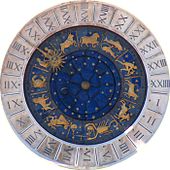Hamburg School of Astrology: Difference between revisions
TexasAndroid (talk | contribs) |
My article could be included as footnote or reference, but it is not appropriate to mention my name in the middle of the article, in the way it was presented. |
||
| Line 12: | Line 12: | ||
| doi = 10.1063/1.2710063. |
| doi = 10.1063/1.2710063. |
||
| year = 2007 |
| year = 2007 |
||
| url = http://adsabs.harvard.edu/abs/2007AIPC..886..284R.}} Witte promoted the use of the transneptunian hypothetical planets, meaning none of the Witte transneptunian planets were astronomically verifiable at the time in which he discovered them nor have they been verified by astronomers at any time since he proposed their existence. Witte’s transneptunian planets were, Cupido, Hades, Zeus and Kronos. In 1924, Sieggrün expanded the list of transneptunian hypothetical planets to include Apollon, Admetos, Vulkanus and Poseidon, beyond what Witte himself perceived to exist. |
| url = http://adsabs.harvard.edu/abs/2007AIPC..886..284R.}} Witte promoted the use of the transneptunian hypothetical planets, meaning none of the Witte transneptunian planets were astronomically verifiable at the time in which he discovered them nor have they been verified by astronomers at any time since he proposed their existence. Witte’s transneptunian planets were, Cupido, Hades, Zeus and Kronos. In 1924, Sieggrün expanded the list of transneptunian hypothetical planets to include Apollon, Admetos, Vulkanus and Poseidon, beyond what Witte himself perceived to exist. |
||
| last = Finley |
|||
| first = Blake |
|||
| title = “ALFRED WITTE: MAN AHEAD OF HIS TIME” |
|||
| date = updated October 26, 2008 |
|||
| year = 2008 |
|||
| url = http://www.uranian-institute.org/ |
|||
| accessdate = October 8, 2009}} |
|||
Ludwig Rudolph printed and published Witte's findings, the core of which were published in the ''[[Rulebook for Planetary Pictures]]'' (''Regelwerk für Planetenbilder'') in 1932. An increasing amount of the [[research]] of the Hamburg School revolved around work with astrological midpoints and use of [[Trans-Neptunian object|the extra planets]]. |
Ludwig Rudolph printed and published Witte's findings, the core of which were published in the ''[[Rulebook for Planetary Pictures]]'' (''Regelwerk für Planetenbilder'') in 1932. An increasing amount of the [[research]] of the Hamburg School revolved around work with astrological midpoints and use of [[Trans-Neptunian object|the extra planets]]. |
||
Revision as of 20:02, 17 July 2010
| Astrology |
|---|
 |
| Background |
| Traditions |
| Branches |
| Astrological signs |
| Symbols |
The Hamburg School of Astrology originated in Hamburg, Germany, and revolved around the research and teachings of surveyor/astrologer/amateur astronomer Alfred Witte. The term Hamburg School of Astrology originated in 1923 at the Second German Astrological Congress in Leipzig, Germany, where the astronomer/astrologer Dr. Wilhelm Hartmann was a participant.
Early students of Alfred Witte were Friedrich Sieggrün and Ludwig Rudolph. In his search for Pluto, Witte claimed four planets beyond Pluto, and Sieggrün claimed yet another four. These bodies are in the Transneptunian regions, where many planetary discoveries are being validated today. These astrologically derived transneptunian factors have as of 2009 neither been proven nor disproven to be among what astronomers have generically labeled Transneptunians, or Kuiper Belt, Scattered Disk Objects, or Oort Cloud phenomena, as further research on this region remains to be done. Remo, John L. (2007), ""Classifying Solid Planetary Bodies"", AIP Conference Proceedings, 886: 284–302, doi:10.1063/1.2710063. {{citation}}: Check |doi= value (help) Witte promoted the use of the transneptunian hypothetical planets, meaning none of the Witte transneptunian planets were astronomically verifiable at the time in which he discovered them nor have they been verified by astronomers at any time since he proposed their existence. Witte’s transneptunian planets were, Cupido, Hades, Zeus and Kronos. In 1924, Sieggrün expanded the list of transneptunian hypothetical planets to include Apollon, Admetos, Vulkanus and Poseidon, beyond what Witte himself perceived to exist.
Ludwig Rudolph printed and published Witte's findings, the core of which were published in the Rulebook for Planetary Pictures (Regelwerk für Planetenbilder) in 1932. An increasing amount of the research of the Hamburg School revolved around work with astrological midpoints and use of the extra planets.
Unfortunately, Witte and Rudolph were pursued by the Gestapo as enemies of the Third Reich. Alfred Witte committed suicide before being sent to a concentration camp, and Ludwig Rudolph was indeed interned, the Rulebook for Planetary Pictures banned and burned by the Nazis.
Reinhold Ebertin, a (unofficial) student of Hamburg School methods, eliminated the use of the hypothetical trans-neptunian objects while maintaining the core teachings of the Hamburg School, renamed them "Cosmobiology" (Template:Lang-de), and published them in The Combination of Stellar Influences in 1940, last updated in English in 1972.
After the fall of the Third Reich, the Hamburg School reconvened, and Ludwig Rudolph, having survived concentration-camp internment, played the key role in perpetuating the teachings of the Hamburg School. The Hamburg School astrologer Hermann Lefeldt combined Witte's theories with more astrological traditions such as the use of astrological houses. However, other Hamburg practitioners maintained their focus on working only with astrological midpoints [1], abandoning traditional practices, including the 12 houses and rulerships; and among these astrologers is former Hamburg School Vice-President Ruth Brummund, who went on to form the new School of Uranische Astrology (Uranian astrology) in Germany.
See also
References
- Brummund: Astropsychologische Charaktermerkmale, Ludwig Rudolph Verlag, Hamburg 1972.
- Brummund: Regelwerk-Neufassung, Brummund Verlag, Hamburg 1990.
- Witte: Der Mensch - eine Empfangsstation kosmischer Suggestionen, Ludwig Rudolph Verlag, Hamburg 1975.
- Witte: Regelwerk für Planetenbilder, Ludwig Rudolph Verlag, Hamburg 1959.
- English translation as: Rulebook for Planetary Pictures, Ludwig Rudolph Verlag, Hamburg 1977.
